We all know that there are lots of lessons to be learned from the Dark Knight movies (and, of course, from Batman in general). We should all get butlers. Don’t take an 8-year-old to the opera. It’s impossible to entirely hide a British accent.
But did you know that Batman can also teach you everything you need to know about ACT Science?
True story.
In fact, the same ten principles that guide the Dark Knight movies will actually guide you through the ACT Science test equally well. (This is entirely separate from Batman’s principle of not killing anybody, unless it’s by accident in a Batmobile-led car chase. I mean, this will also help you get through ACT Science successfully, but I’d hope that it goes without saying.)
Table of Contents
- You Don’t Have to Know the Backstory: The Least You Should Know About ACT Science
- Cut to the Chase: Timing on the ACT Science Test
- “It’s What You Do That Defines You”: Scoring on ACT Science
- Don’t Overthink It: Choosing to Take ACT Science
- The Finer Points of the Science Don’t Have to Make Total Sense: Skills Tested on ACT Science
- You Always Fear What You Don’t Understand: Question Types on the ACT Science Test
- Picking Ourselves Up: Common ACT Science Test Struggles
- Take the Law Into Your Own Hands: A Guide to Raising Your ACT Science Score 2, 4, or 6 Points
- Ninja Training Never Hurts: How to Get a Perfect 36 on the ACT Science Test
- Assemble Your Bat Cave: Where Can I Find More Examples/Resources?
Mastering these ten skills are the key to rocking ACT Science. So what are you waiting for? To the Batmobile (where we will be reviewing some basic drivers’ ed lessons before proceeding, thank you very much)!
How to Use This Post
The best way to use this post will depend entirely on where you are in your ACT prep. If you’re just at the beginning and ACT Science is totally new to you, I suggest starting with The Least You Should Know About ACT Science—or, if you aren’t even sure that you’ll be taking the ACT test at all (maybe the Science section is putting you off?), check out ACT Science and the SAT.
On the other hand, if you’ve been studying for a while now and want to get your score as high as possible, but just can’t seem to break through to the next level, check out Common ACT Science Test Struggles, A Guide to Raising Your Score on ACT Science, or even How to Get a Perfect 36 on the ACT Science Test.
If you’re an old hand at ACT Science and are just looking for a refresher, check out our ACT Science Quiz to see how well your preparation has set you up for the test itself. Then, head on over to More Examples and Resources for guidance on what your next steps should be!
You Don’t Have to Know the Backstory: The Least You Should Know About ACT Science
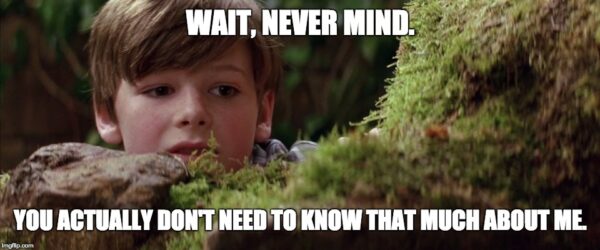
Maybe, like me, you started watching the Batman trilogy with The Dark Knight or even The Dark Knight Rises. Guess what? You could still follow it. It’s great if you started with Batman Begins, but even if you didn’t, the backstory is basically: childhood fear of bats, parents die, ninja training. And you don’t even need to know that to follow along.
The same holds true for ACT Science. You don’t need to be a Nobel Prize-winning physicist to do well (or even get a perfect score) on the test. You just need enough to master what’s presented to you in a limited time frame.
With no further ado, here’s the ACT Science section in brief: It’s the fourth section on the ACT and the last multiple-choice section. After this, you may or may not go on to The Essay! Unlike the essay, however, ACT Science is a required part of the ACT.
You’ll encounter 40 multiple-choice questions corresponding to up to seven passages (the ACT reserves the right to give you seven, but recent tests have featured six). These questions focus extensively on scientific reasoning; only a handful will test scientific facts. However, even though this scientific reasoning will sometimes require basic calculations, it’s important to note that you cannot use your calculator on the ACT Science test.
If I just told you everything you ever wanted to know about ACT Science and you’re headed out now, that’s awesome, but just one quick thing before you go: you may have heard from other sites and materials that ACT Science gives you the following distribution of question types:
- 3 Data Representation passages with 5 questions each
- 3 Research Summaries passages with 6 questions each
- 1 Conflicting Viewpoints passage with 7 questions
This is outdated information! Yes, the ACT Science test does still use these three passage types, but be prepared to encounter any mixture of the above. However, you can rest assured knowing that Research Summaries and Data Representation appear the most, trailed by Conflicting Viewpoints (for more on this, see Question Types below and our post, “Has the Format of the ACT Science Test Changed?”).
Cut to the Chase: Timing on the ACT Science Test
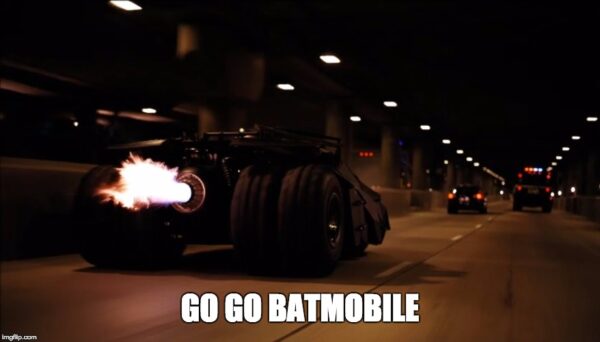
On the ACT Science test, you’ll face 40 problems in 35 minutes. That’s not quite such a time crunch as, say, the Math section (where it’s 60 problems in 60 minutes), but it’s still a feat to accomplish! Given that you’ll also have passages to read, this can make timing even trickier.
What to do? Be like Batman, of course! That is to say, don’t overthink it before diving into the (metaphorical) car chase. You can approach the ACT Science test in a variety of ways: start with your favorite kind of passage, whether by subject or by question type; start with the question types you find easiest; in the end, there are a lot of ways to approach ACT Science, but the best way will be the one that helps you manage your time best.
“It’s What You Do That Defines You”: Scoring on ACT Science
“It’s not who you are underneath; it’s what you do that defines you.” – Rachel Dawes, played by Katie Holmes in Batman Begins and by Maggie Gyllenhaal in The Dark Knight.

(*On the ACT, that is. Let’s just clarify that in life, who you are is also important.)
ACT Science, like the other ACT multiple-choice tests, is graded on a scale from 1-36. It is listed separately on your score report, and also averaged with the other multiple-choice sections for your overall, or composite, score.
What is a good ACT Science score? A lot of it (just like with a good ACT score overall) depends on what your goals are.
However, one way of determining if your ACT Science scores are where you want them to be is to look at them in the context of the larger pool of test-takers. Percentiles help you do this. Your percentile on any given ACT test describes how many students out of 100 scored lower than you did on that test.
So without further ado, here are the most recent ACT Science percentiles:
ACT Science Percentiles
| Scaled ACT Science Test Score | Percentile |
|---|---|
| 36 | 100 |
| 35 | 99 |
| 34 | 99 |
| 33 | 98 |
| 32 | 96 |
| 31 | 95 |
| 30 | 94 |
| 29 | 93 |
| 28 | 91 |
| 27 | 89 |
| 26 | 86 |
| 25 | 82 |
| 24 | 77 |
| 23 | 70 |
| 22 | 63 |
| 21 | 56 |
| 20 | 49 |
| 19 | 41 |
| 18 | 34 |
| 17 | 28 |
| 16 | 22 |
| 15 | 17 |
| 14 | 12 |
| 13 | 9 |
| 12 | 6 |
| 11 | 3 |
| 10 | 2 |
| 9 or below | 1 |
Those of you aiming for a top score may wonder if it’s even possible to score a 36 on ACT Science, as the chart (based on official ACT data), shows that a 36 is in the 100th percentile. It is definitely possible! However, very few people do score this high.
Because percentiles are out of 100, it seems as though it should be impossible to be in the hundredth percentile (since you are necessarily the hundredth person)! These are percentages, though, rounded up: so while it’s not impossible to get a perfect 36 on ACT Science, it may be that 1 out of every 200 (or even fewer) students do score this high. Be reassured, though: while a 36 is definitely impressive, Science scores above 30 put you in the running for even the most competitive colleges.
The average ACT Science score is 20.9, making any score above this good, in that it is better than average.
Don’t Overthink It: Choosing to Take ACT Science
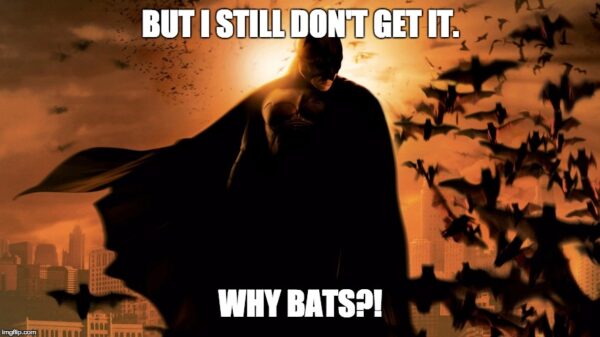
If you’re anything like me, at some point during Batman Begins, you may have started thinking, wait, what? He was scared of bats, so he decided to become a bat? That’s it? No magic bat bite or anything like that? But you can’t fall into this trap, because your enjoyment of the movie only works if you don’t think too hard about the details behind it.
The same thing is true of ACT Science in general. A lot of students hesitate to take the ACT because they worry about the Science test—but you really don’t have to be a “science person” to succeed on the test, or even to get a top score.
ACT Science prioritizes scientific reasoning heavily over scientific facts. In fact, you’re likely to only see a handful of questions about biology, chemistry, or physics principles. Instead, you’ll read graphs, interpret the results of experiments, compare scientific findings, and evaluate varying viewpoints on a scientific topic.
Basically, ACT Science should probably be renamed “Scientific Reasoning,” because as it is, it’s scaring a lot of students away! Don’t let its presence on the ACT turn you away from the test. Instead, stay with us for a deeper look at the skills tested on ACT Science, and then compare the SAT versus the ACT in terms of the whole test. Then, and only then, should you choose which test is best for you!
(Also, it’s worth noting that given the new focus on graphic stimuli in several sections of the new SAT, that exam tests similar skills.)
The Finer Points of the Science Don’t Have to Make Total Sense: Skills Tested on the ACT Science Test

Quick tip: if you focus too hard on the science in Batman, you’re going to ruin the movies for yourself. Once you start saying, “Wait a minute. Given the height of the average skyscraper and the weight of a man with above-average muscle mass, those wings shouldn’t be able to keep him aloft, let alone propel him through the air. Let me just make some quick physics calculations. Factoring in air drag…”
Nope. You’ve officially ruined the movie.
As you prepare for ACT Science, I want you to pretend that you’re watching one of the Batman movies. It’ll definitely be helpful if, from time to time, you can go, “oh, titanium! I know what that is!” But if you try to apply everything from your AP Physics class to the ACT Science test, you’re going to waste a lot of time and effort.
I’ve said it before, but I’ll say it again: you want to focus on scientific reasoning in your ACT prep, rather than scientific content. That means you should know about the scientific method, know how to read graphs, and know the basics of each content area—and then spend your time working on ACT Science practice questions and sections so that you can get a good feeling for exactly how the exam likes to test each concept. (We’ll take a look at what these questions look like in just a minute.)
Taking full-length ACT Practice tests is also important, because Science is the last of the multiple-choice sections, and you need to build up endurance. Luckily, we have a full-length ACT Practice test PDF for you right here!
With all of that said, don’t ignore the science completely as you prepare. You should be familiar with the basic principles of four scientific disciplines to help guide your reasoning throughout the test: Physical Sciences, Biology, Chemistry, Physics.
Even if you haven’t taken a physics class before, or are only beginning it when you take the ACT, remember that ACT Science can only test a limited amount of information to remain fair for all students (and thus standardized). With time and work, you can master this material, no matter where you currently are in your science studies.
What Are the Goals of the ACT Science Test?
Primarily, the goal of ACT Science is to quantify your reasoning skills. If the sound of that makes your blood run cold, though, I have some good news: the Science test also does this in a limited number of ways (that’s the beauty of standardization).
So as you prepare for ACT Science, you should be thinking about polishing up the following skill sets in particular:
- Comparing experiments
- Weakening (or occasionally strengthening) hypotheses
- Spotting patterns
- Interpreting evidence
- Making inferences
In short, ACT Science does test you on abstract concepts, but you can prepare with very specific methods.
And just to give you a leg up, here are the five most commonly tested topics on ACT Science!
Why Do Colleges Care?
Good question! After all, scientific reasoning isn’t actually a course that most (if any!) high schools offer, so why are colleges interested in how you score on ACT Science?
Well. Colleges are really, really invested in students succeeding. They don’t want to admit students who will struggle and drop out, or take longer than four years to graduate, because that can hurt their rankings and reputation. And the fact is that, even if you were looking forward to saying goodbye to science after senior year of high school, most colleges have core curriculum requirements—meaning that you’re probably going to have to take at least one other science class at some point in college. (Sorry. I didn’t invent the system!)
But colleges, like the ACT, know that facts can be learned and forgotten. Nobody wants you to go back through all your freshman-year biology notes and try to memorize them. Instead, if you demonstrate that you have strong reasoning skills, college admissions committees can then make the inference that you have the skills to learn the facts and make sense of them when they are presented to you later. You get good grades and pass; the college is happy. Everybody wins!
(I should note that this focus on reasoning is one reason why even students who do really well in their science classes can still struggle to get top scores on ACT Science. You have to think like this test to succeed on it!)
Which High School Classes Taught You These Skills?
Your science classes have taught you the content you need to know, particularly if you’ve already taken physics (but again, don’t worry if you haven’t; just know this is an area you’ll have to prepare separately). You’ve most likely learned about the scientific method, hypotheses, reading graphs, and other content and skills ACT Science tests in these classes.
However, you may be surprised to know that your math and English classes will also help you on ACT Science. You will occasionally need to make basic calculations in the section, in which case a good grasp of mental math is extremely helpful. As for English, it’ll help you when it comes time to compare scientists’ viewpoints—as well as to make inferences about data. In a lot of ways, inferring from data isn’t that different than inferring from words: you’re still using evidence to help you make broader, more abstract claims.
What Science Classes Should You Have Completed to Take ACT Science?
At this point, it probably won’t surprise you to hear that it doesn’t really matter what science classes you’ve taken so far. Yes, they’re helpful, but you can still ace ACT Science without them.
Take careful note, though: that’s only true if you’re willing to put in the time on your own. You will still need a basic grasp of biology, chemistry, physics, and earth science to answer the questions on ACT Science quickly enough to get a good score.
How to Study for ACT Science…Without Studying
You’re actually already doing a lot in real life for ACT Science prep, though you may not know it. Every time you argue with someone, challenging their opinion, you’re working on weakening their hypothesis. Every time you think about trends (fashion, musical, or really anything), you’re identifying patterns. And how many of us can go through life without having to read a table, chart, or graph every now and then?
In other words: if preparing for ACT Science feels like too big a task to master, know that you’re already halfway there!
On the other hand, the ACT will test you on this reasoning in very specific ways…so let’s take a look at the form in which you’ll see it tested on the official exam.
“You Always Fear What You Don’t Understand”: Question Types on the ACT Science Test

Actually, before we get into the types of ACT Science questions, let’s take a look at the types of passages you’ll see first.
ACT Science Passage Types
On ACT Science, you’ll find that passages fall into one of the following three categories:
- Data Representation (approximately 2-3 passages)
- Research Summaries (approximately 3 passages)
- Conflicting Viewpoints (approximately 1 passage)
Data Representation, the most straightforward type of ACT Science passage, has you interpret data in the form of charts, graphs, tables, or other visual stimuli. You can tell these passages apart from Research Summary passages because Data Representation passages do not have experiment descriptions. Most students find them the easiest passage type to tackle, though obviously that will vary depending on your strengths and weaknesses.
Research Summaries are the second passage type on the ACT Science test. This type of passage describes the set-up and result of experiments undertaken by either scientists or students. Headings such as “Experiment,” “Trial,” or “Study” make these easy to identify. And while that may seem abstract, there are specific strategies for this passage type (as with other ACT Science passage types!) to help you master it.
Finally, Conflicting Viewpoints passages read almost like paired passages in ACT Reading. However, they focus on scientific subjects—and the associated questions will also focus on science. They’re also easy to spot, because they’re the only passage type without any graphic stimuli (AKA illustrations).
Here’s ACT expert Kristin with more information on Conflicting Viewpoint passages:
ACT Science Question Types
So what can you expect to see after each passage? We’ve made it simple for you! Here’s a video summarizing all the ACT Science question types you can expect to see on test day:
An even more universal question type is the “Yes/No Because…” question. Kristin will walk you through this tricky question type here!
There are also particular question types that align with particular passage types. For example, Conflicting Viewpoints passages are likely to have Point of View questions (while these wouldn’t make sense with other passages, since they don’t contain opinions).
ACT Science Quiz
When all the ACT Science passage and questions types are new to you, it can be confusing to try to keep everything straight in your head! Sometimes, it’s easier to take a look at the types of questions you’ll actually see on test day. With that in mind, why not read through the Data Representation passage below, then have a go at the five ACT science questions that follow?
Questions 1-4 are based on the following passage and figures.
Global warming caused by human activity seems to correlate strongly with loss of glacier mass. Figure 1 shows a steady increase in average global surface temperature due to human activity, starting in 1950 and continuing through 2,000. Figure 1 also compares two predictive models for changes in global surface temperature during that time period: one model that only accounts for natural forces, and one that accounts for both natural and human impacts on global surface temperatures. You can see the accuracy of these two models in relation actual observed changes in global surface temperature.
Figure 2 shows changes in glacier mass, as measured in meters of thickness, from 1955 to 2010. This data comes from three glaciers that have been identified by the United States Geological Survey (USGS) as “benchmark” glaciers. USGS scientists have determined that these glaciers show melting rates and loss of ice that are typical of glaciers around the world. The changes in mass are indicated by values for cumulative mass balance (CMB). A positive value indicates that a glacier is gaining mass. negative values show that a glacier is melting and losing mass. Glacial mass is expressed by the thickness of the glacier, in meters.
Figure 1

Figure 1, United States Environmental Protection Agency
Figure 2
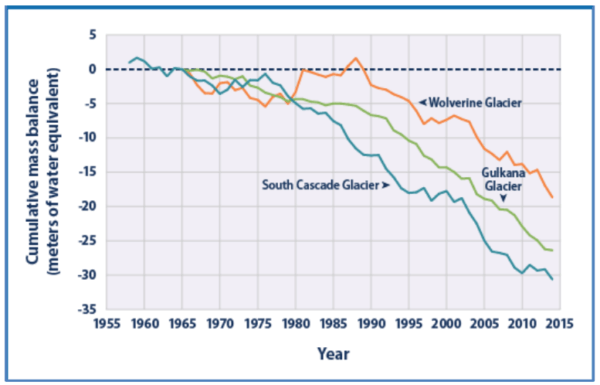
Figure 2, United States Environmental Protection Agency
Picking Ourselves Up: Common ACT Science Test Struggles
“Why do we fall sir? So that we can learn to pick ourselves up.”

It sounds awesome when butler Michael Caine…I mean, Alfred…says it, but actually, that sentence makes no sense. When you think about it, nobody’s really trying to fall down. And picking ourselves up is more of an instinct than something you have to practice. Still, it sounds good.
With all of that said, some stumbles are likely as you begin (or continue) your ACT Science prep, so let’s take a look at a few areas where students struggle on this test.
ACT Science Struggles: Graphs
Yes, we’ve all worked with graphs at some point in our high school careers, but ACT Science graphs may be slightly different from what you’ve worked with thus far. These graphs can be in different formats, contain more data, or even use unexpected units. At any rate, whether they realize it or not, many students lose a lot of points by not mastering ACT Science graphs.
Never fear! We have a post to help you figure out exactly what to do with this kind of data on test day. Check out The Complete Guide to ACT Science Graphs and Tables.
ACT Science Struggles: Strategy
Another way students lose unnecessary points on ACT Science is when they look at the multiple-choice answers.
I know, this sounds crazy. Maybe I should clarify that students lose unnecessary points on ACT Science when they look at multiple-choice answers too soon.
What do I mean by “too soon?” I mean, before you come up with your own answer (a strategy known as “predict before you peek”).
This is important to do on ACT Science because the wrong answers on these questions won’t always look obviously wrong. Instead, they’re more likely to look almost right. This is a tricky distinction—and when you’re hurrying through the questions on test day, you’re much more likely to pick a wrong answer if you don’t have a sense of what the right answer should be beforehand.
ACT Science Struggles: Time
Finally, as we already touched on above, one thing that a lot of students struggle with on ACT Science is getting those 40 questions answered within the 35-minute time limit! One of the most important things you can do to master this is to time yourself while practicing: start out with a generous time allowance, then gradually shorten it until you’re answering at least a question a minute on average.
Going into the ACT Science section with a plan is also absolutely vital. It doesn’t matter which order you approach passages or questions in, but make sure you know what you’re going to do. Equally important: make sure that you’ve practiced your plan extensively before the official test!
Anxiety is our body’s way of trying to help us avoid danger. However, it definitely becomes counter-productive on test day! If you struggle with time, you can get into a cycle of focusing on anxiety, slowing down or getting lost, losing time, and getting more anxious. The best way to avoid this is to center yourself before you go into the test. Here’s what a top-scoring Magoosh student, Ori, did before the test began:
“To stay calm, I put my phone on airplane mode and read a book while waiting for my testing group to be called. Everyone else was refreshing Instagram and talking to each other about test prep strategies while I was re-reading one of my favorite books. Because I had something to focus on, I didn’t think too much about the test itself.”

Take the Law Into Your Own Hands: A Guide to Raising Your ACT Science Score 2, 4, or 6 Points

Sometimes, you can’t wait around for Batman to come save you. After all, what if the bat signal malfunctions? It’s time to take the law into your own hands and boost your ACT Science score to where you need it to be—whether that’s a raise of 2, 4, or even 6 points, you’ll find the info you need here!
Raising Your ACT Science Score 2 Points
If you familiarize yourself with all aspects of the test that we’ve discussed, you may already have learned enough to bring up your score by two points. However, to lock down that score improvement, make sure you have your study methods down. Tweak your plan to accommodate the new methods and strategies we’ve talked about, and take a look at How to Study for ACT Science, and download our free ACT flashcard app.
Round off your ACT Science practice with Easy Tips for ACT Science and our Top 9 ACT Science Tips. Putting them into practice, combined with a strong study plan, will help to raise your score.
Raising Your ACT Science Score 4 Points
4 points is a big jump on ACT Science, but it’s absolutely possible! First of all, you’ll want to make sure to use both the strategies and tips discussed throughout this post, as well as preparing a study schedule and using the ACT Science tips students working to raise their score by two points are applying. Check out some further ACT Science tips to prepare yourself even further.
To earn those additional four points, you’ll not only need to have a great schedule and the basics of the ACT Science section down, but you’ll also need to make sure you’ve mastered scientific reasoning. To do this, start by checking out Magoosh’s tips on how to link tables and graphs on ACT Science. Then, continue on to finding trends and patterns in the Science section. By working through these strategies, you’ll not only have the content and the format of the ACT Science test covered, but you’ll also get a good sense of how the test “thinks.”
Raising Your ACT Science Score 6 Points
Making this big a leap on ACT Science is difficult, but definitely possible! Again, make sure you’ve covered all the ACT Science tips under 2 and 4 points.
At this level, you’ll need to know ACT Science reasoning skills well. These may seem tricky to practice, but you’ll find that a lot of problems pertaining to graphs and tables test these skills. To master these, check out Magoosh’s post on ACT Science graphs and tables.
Finally, when you’re aiming to raise your score by such a significant amount, make sure you keep on track by taking lots of ACT Science practice tests and full-length ACT practice tests: one per week is a good goal. Just make sure you spend plenty of time reviewing it and studying how to answer the questions you got wrong correctly next time!
Ninja Training Never Hurts: How to Get a Perfect 36 on the ACT Science Test

As we’ve already seen, you don’t need to get a perfect 36 to have one of the most competitive ACT Science scores. On the other hand, if you have your heart set on getting the perfect score, that’s awesome! Just know that it will take significant work.
It is true, though, that in ACT Science, you don’t need to be a scientific genius to get a perfect 36. With good skills building and practice (including ACT practice Science tests), you can master this part of the exam.
As you aim for a perfect score in ACT Science, bear in mind that this part of the exam does not test your scientific knowledge. Instead, it tests your ability to read and understand science texts and data. To excel, you don’t need to memorize scientific facts—you just need to be comfortable with university-level science passages. Luckily, Magoosh has some science passages and practice questions to help you get more comfortable before test day.
To Get a Perfect 36 in ACT Science, Practice Reading Academic Science Texts
Certain popular scientific websites match ACT Science texts in terms of tone and sophistication. Popular Science and the Public Library of Science website both have good reading practice, comparable to the style and complexity of science readings on the ACT. Scientific American is pretty good too.
You should also read actual university science textbooks if possible, because the ACT Science section really is designed to test your ability to handle undergraduate science course materials. Aim for first and second year texts, but don’t shy away from more advanced college science, if the difficulty level is similar to what you see in official ACT test preparation materials.
If you’re not sure where to find college science readings, ask someone at the reference desk of your local public library…or check with some university faculty. Many university faculty members will be more than happy to show some science texts to an ambitious aspiring college student.
To Get a Perfect 36 in ACT Science, Practice Reading Visual Information
Make sure you do some reading practice that helps you prepare for the many ACT Science graphs and tables you’ll see on the exam. Again, the idea here is to practice reading for skill, not for content. This means you don’t necessarily need to look just at science graphs and tables. Any practice you do reading visually organized data will help.
For infographic reading practice, a number of popular websites can provide you with some ACT-like visuals. News websites are full of graphs and tables related to economics, politics, and other topics. And of course, Popular Science, Scientific American and the Public Library of Science, mentioned and linked above, also have plenty of articles with informational visuals.
There will always be a few science visuals on the ACT that are unusually complicated, more so than the visuals you’ll find on informational websites meant for the general public. To practice for more complex ACT visuals, I suggest looking at the data on Information is Beautiful, a site devoted to graphic data.
The right combination of reading practice can really help you get that perfect score. The other half of the “perfect 36” equation is skills-building.
To Get a Perfect 36 in ACT Science, Build Your Math Skills
There is a lot of math in ACT Science. Don’t worry though—the math in the ACT Science section will not be as complicated as the ACT Math section itself.
But you will need to have a good sense for numbers. To get a perfect 36 in ACT Science, you should be able to comprehend the meaning of complex numbers as they appear in sets of scientific data. You’ll need to understand exactly how each number quantifies a property, characteristic, or scientific variable.
You will also need to make simple calculations based on math formulas that appear in scientific passages. You won’t need to memorize any formulas, because the formulas will be given and completely explained on the ACT Science test. And you won’t need to make precise calculations of exact numbers like you would in the Math section. Instead, the math of ACT Science requires you to estimate the value of variables using given formulas and instructions.
In your reading practice, notice the times that an article cites scientific measurements and numbers. Really understand how those numbers are used to calculate other numbers. For example, you should be able to understand how two variables such as tree height and tree age could be used to calculate a third variable such as the annual rate of tree growth.
When you see numbers in your ACT Science reading practice, don’t just skip over them—understand what they really mean in the context of the passage. And take the time to play with the variables in a science article. Whenever an article makes a conclusion based on the numbers, double-check the conclusions by making your own calculations.
And try changing the numbers to make new calculations of your own. Returning to the tree growth rate example, a student could practice the math of ACT Science by changing a tree’s age or height, then re-calculating annual growth rate.
To Get a Perfect 36 in ACT Science, Recognize and Apply the Scientific Method
To get a perfect 36 in ACT Science, you need to think like a scientist as you go through practice materials. Understand the ways in which scientists use logic to gather data, interpret it, and reach conclusions. Then apply that logic to ACT Science questions. On the exam, you may be asked to identify the best procedure for gathering scientific data, or choose the most valid model for an experiment. To excel at these questions, you need to recognize the logic of the scientific method, as seen in your practice readings.
Assemble Your Bat Cave: Where Can I Find More Examples/Resources?
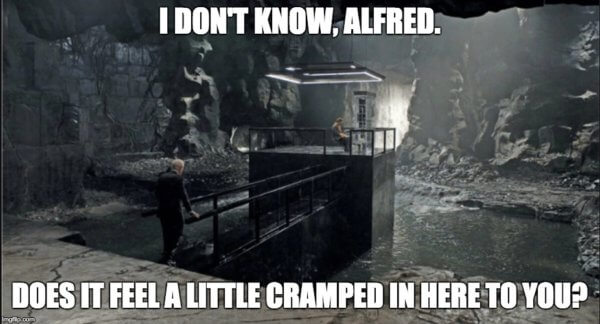
First of all, don’t worry: you won’t need thousands of feet of underground space to store all of your ACT prep materials. In fact, you can find a lot of them right here on the Magoosh blog.
Before you move on, though great job for making it this far! You now have all the info you need to get the score you want on ACT Science. You know about the basics and timing of the section; the question types; common pitfalls; and how to boost your score as much as you need to. You may also be wearing an awesome cape by this point (but I won’t hold it against you if you aren’t).
So where do you go from here? As we all know, Batman doesn’t really have any crazy superpowers. What he does have are billions of dollars, great mentors, and some awesome equipment. In other words, he has great resources.
And luckily for you, now you do, too! Now that you’ve finished learning everything you need to know to prep you for ACT Science success, try out some more Science practice here. When you’re done with that, try out these super-charged ACT Science problems! Finally, don’t forget to go straight to the source; the ACT website is also an indispensible resource on your ACT journey.
You can also check out some of Magoosh’s ACT Science lessons, to which we’re giving you free access!
- Unfamiliar Terms
- Science Knowledge Questions on the ACT
- Finding Patterns and Trends
- Finding Clues in the Answer Choices
A Final Word
Congratulations—you’ve saved Gotham! Now that you’ve mastered the basics of ACT Science, check out our posts about the other sections of the ACT:
- Your Magical Guide to Scoring a Perfect 12 on the ACT Essay
- How to Get a Perfect 36 on ACT Reading: An Intergalactic Guide
- How to Get a Perfect 36 on ACT Math: The Jurassic Guide
- How to Get a Perfect 36 on the ACT Reading Test: A Tropical Guide
![]()
With many thanks to Kristin Fracchia and David Recine for their contributions to this post.






Leave a Reply